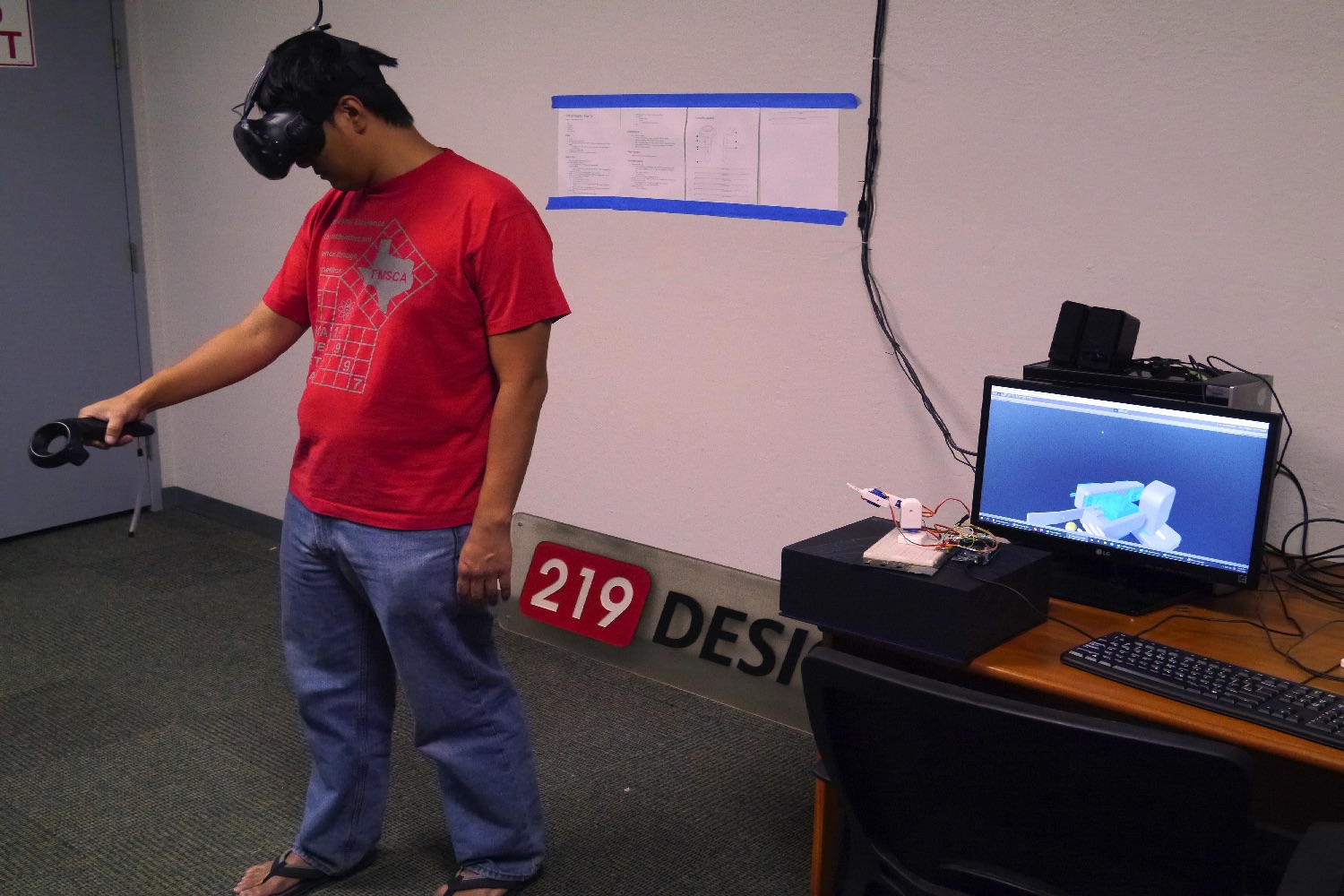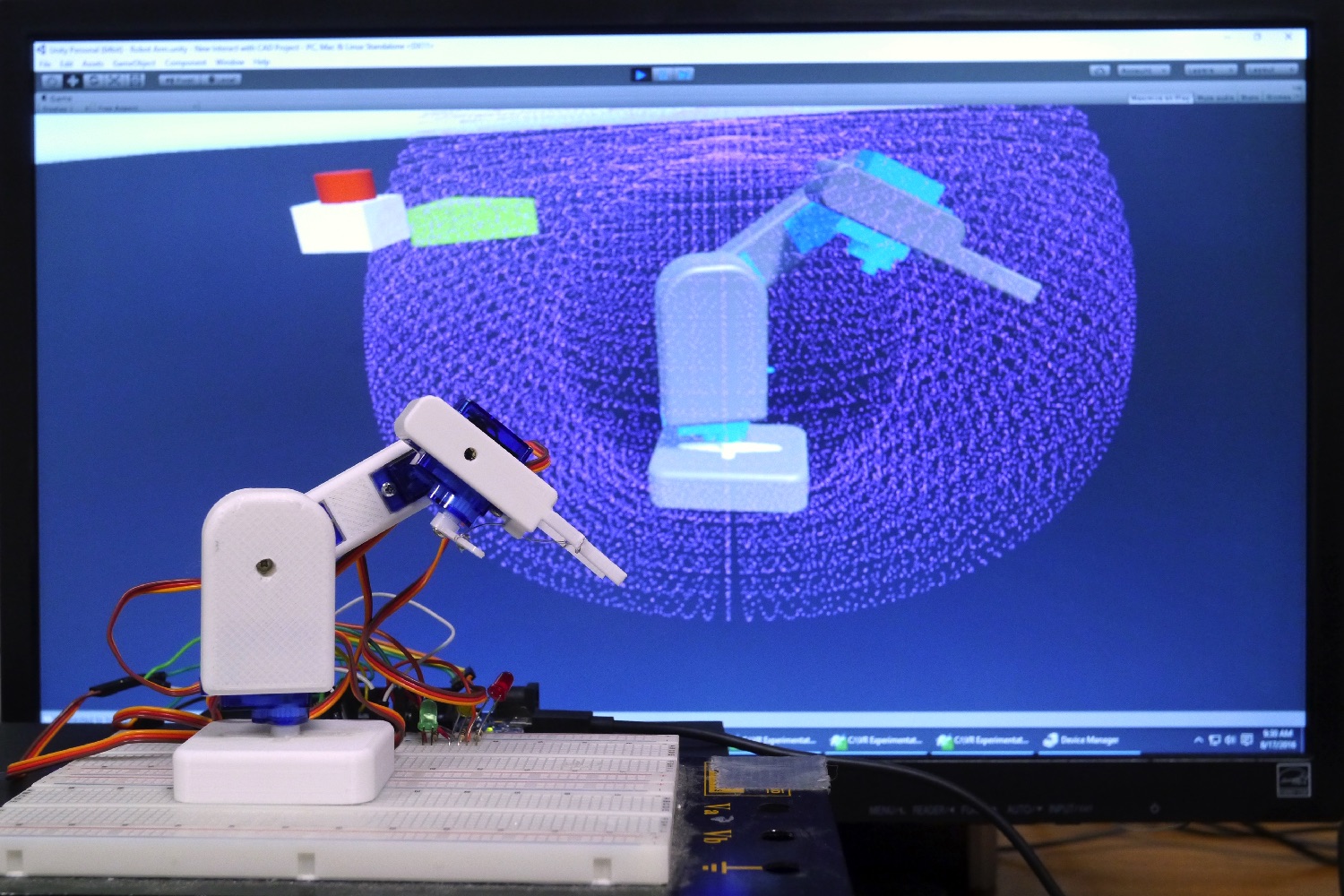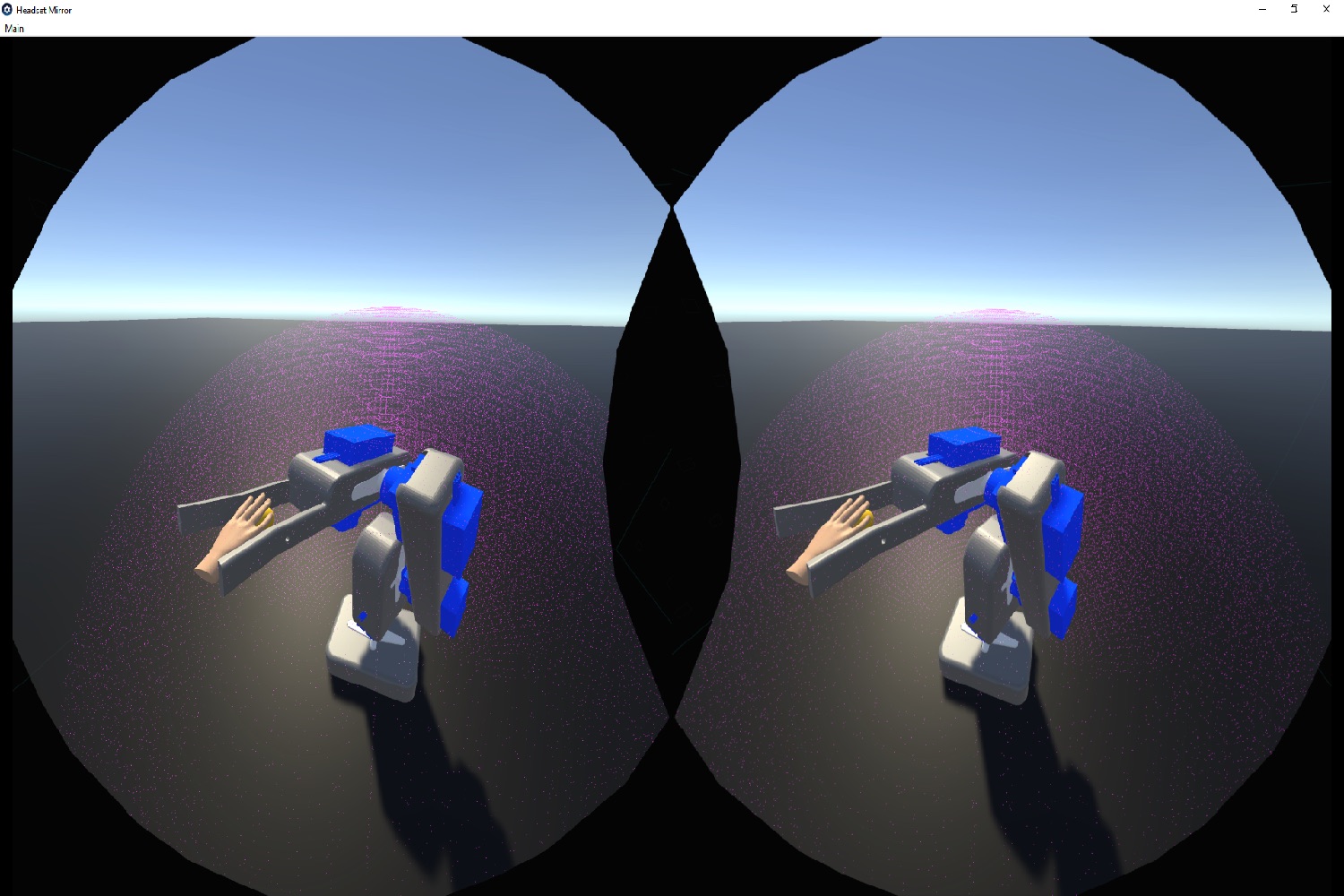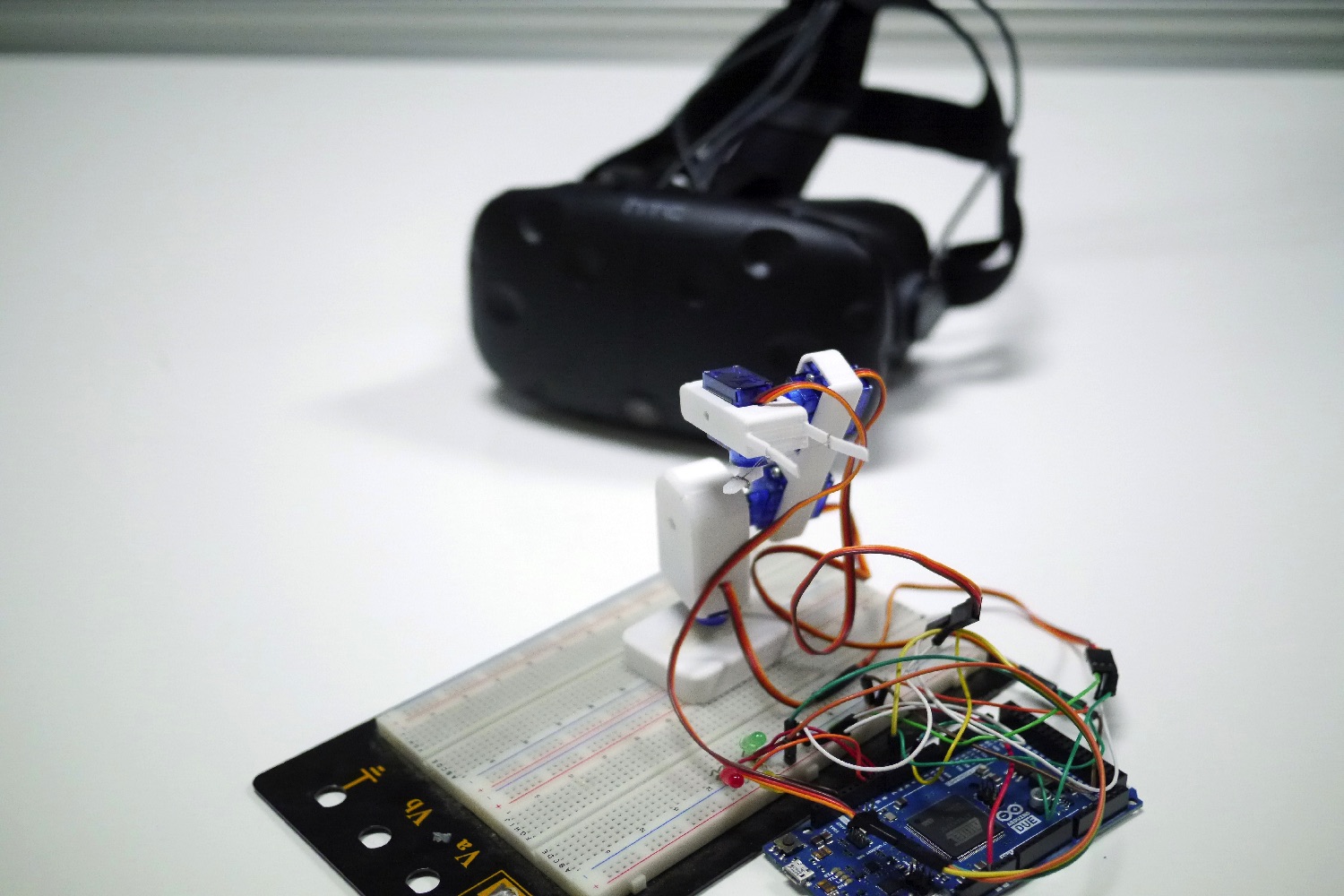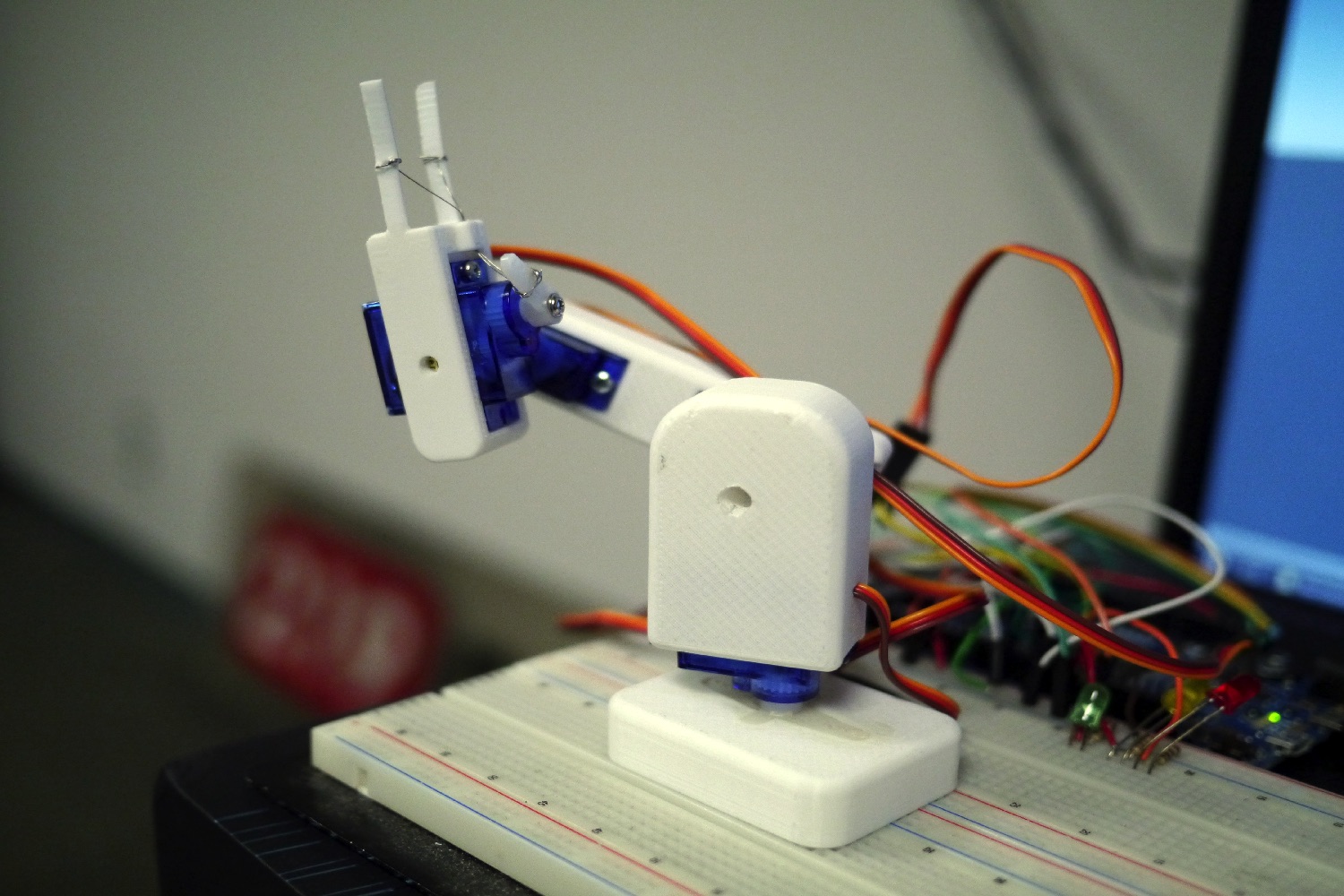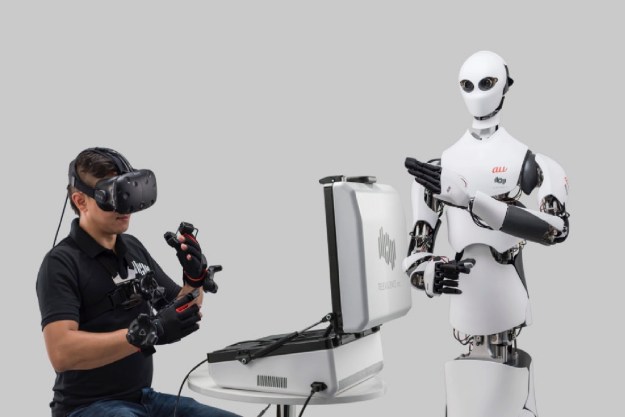That was the inspiration behind an innovative new creation by researchers at Silicon Valley product engineering company 219 Design. Using 3D printing, open-source electronics, and a clever interface, they’ve created a real robotic arm which can be controlled using an HTC Vive headset.
“We had a really sharp summer intern that came out for a few weeks, who was very excited about virtual reality,” 219 Design team member Dave Bim-Merle told Digital Trends. “He also wanted to do some work with robotics. We wanted to come up with a project he could do in the relatively short amount of time he had available to spend with us. What we were interested in was coming up with a way — even if it was just a tiny step — to take a person in virtual reality and bring them back into real reality. There were a ton of ideas brainstormed, but we always returned to the concept of how cool it would be if there was a robot arm you could control with VR.”
The robot arm is controlled using a VR app, allowing for “precise and intuitive” control in either real time or via a recorded motion path the arm can follow on command. As the team noted, in this way the user is able to “teach” desired behaviors without having to possess any programming knowledge.
At present, Bim-Merle stressed that what 219 Design has created is no more than a proof of concept, intended to explore a concept which could play a big role in VR development.
It’s hard to deny that this opens up some interesting avenues. “Whether it’s VR surgery, post-disaster recovery, bomb disposal robots, or even more mundane applications like cameras you can send down sewer pipes for investigations — there are exciting possibilities for products which can incorporate VR on some level,” Bim-Merle said.
Editors' Recommendations
- Space station’s new robotic arm springs to life
- Pimax’s 12K QLED VR headset wants to take virtual reality to the next level
- Holotron is a robotic exosuit that could transform the way we use VR
- Spatial is what would happen if Slack and Zoom had a virtual reality baby
- Amazon’s new AR app lets you have fun with all those Prime Day boxes
